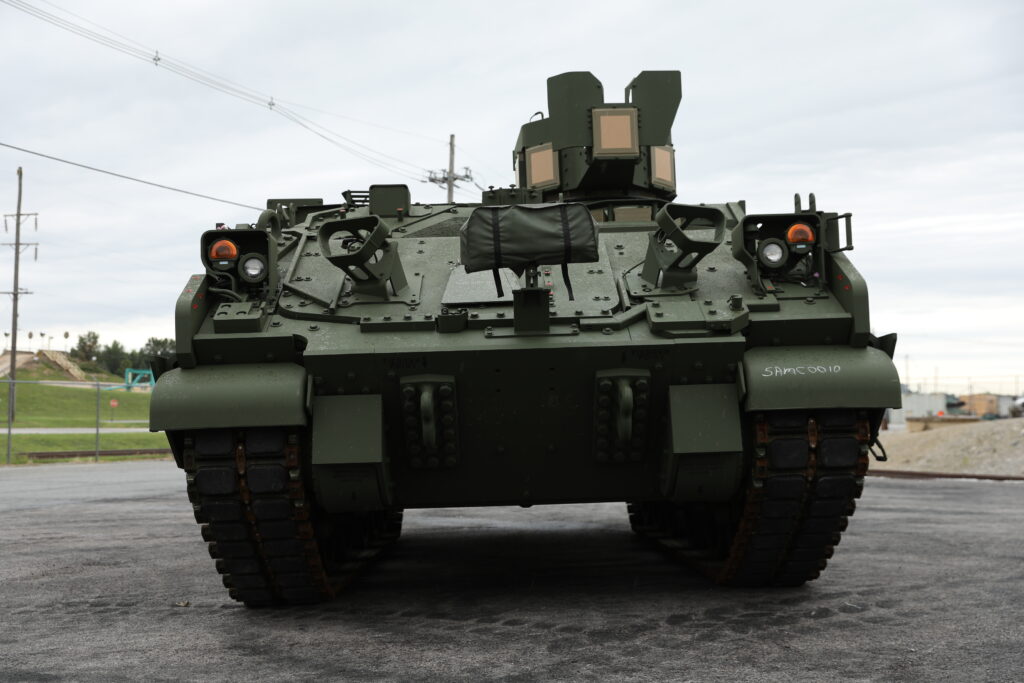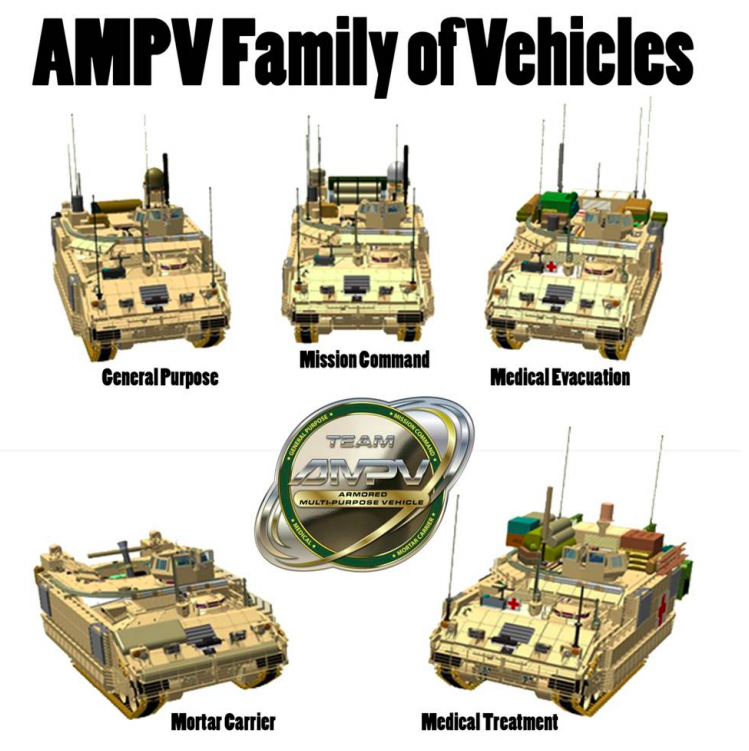
The first production Armored Multi-Purpose Vehicle, a mobile command post variant
WASHINGTON: BAE Systems formally delivered its first production Armored Multi-Purpose Vehicle, a mobile command post variant, to the Army the company announced this morning. The delivery comes months behind schedule. But that’s a relatively small delay when you consider that the vehicle the AMPV is meant to replace, the workhorse M113 tracked transport, entered service in 1960.

Army M113 in Vietnam
Soldiers considered the lightly armored M113 dangerously vulnerable to landmines all the way back in Vietnam – many felt safer riding on top instead of inside – and the threat of roadside bombs kept them largely out of action in Iraq. But while the much heavier M2 Bradley replaced the M113 for frontline infantry and scouts, a host of M113 variants remained in service as mobile command posts, armored ambulances, and other support vehicles. The AMPV is meant to replace those, coming in five variants: mobile command post, armored ambulance, a mobile mini-ER called a Medical Treatment Vehicle, a fire support model armed with a heavy mortar, and a general-purpose hauler.
BAE got the contract in large part because it offered a straightforward solution that would simplify Army maintenance and logistics. Its AMPV design is basically a Bradley with the turret taken off, so it shares components not just with the Bradley but with the latest model of the M109 Paladin PIM howitzer, whose aging and underpowered engine was replaced with Bradley-derived automotive components.

The five AMPV variants.
But actually building the AMPV and the upgraded Paladin turned out to be not so simple, after all. BAE’s York, Penn. plant had years of experience overhauling the Bradley fleet, which has been repeatedly upgraded over the years, but it struggled to scale up to manufacture the new vehicles. Even before COVID-19 disrupted the industrial base, York was already wrestling with quality control problems. Meanwhile the Army began shifting money to more technologically ambitious weapons systems, like Robotic Combat Vehicles, hypersonic missiles, and Future Vertical Lift aircraft.
As a result, the Army cut back the AMPV buy in its 2020 budget request, then cut both AMPV and Paladin in 2021. Delivery of the first production vehicle (as opposed to prototypes) slipped from May to July and then, thanks to coronavirus, to August.
With the federal budget stressed by COVID, the military is already looking hard at which programs it may have to cut in future years. How many AMPVs the Army ends up buying is unclear – but getting the first production vehicle in soldiers’ hands is a much-needed win for the program.
Global military spending hits ‘all-time high’ of $2.4 trillion: SIPRI report
The US remains the world’s largest defense spender, outlaying $916 billion last year, a 2.3 percent annual increase, ahead of China in second place, which spent an estimated $296 billion, a 6 percent increase over the same period.



























